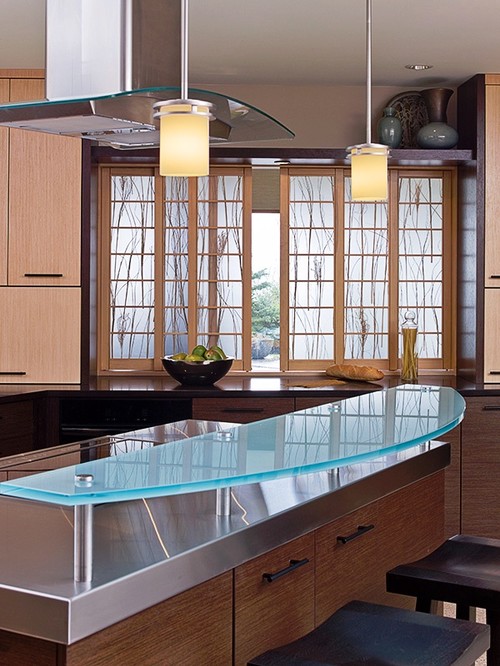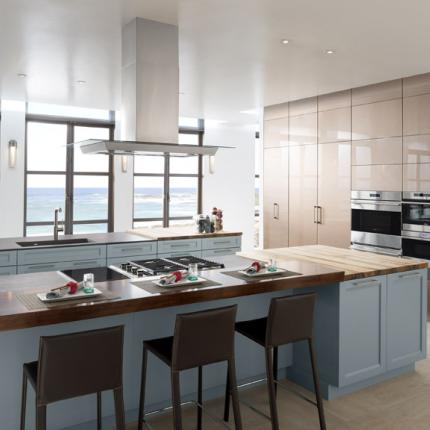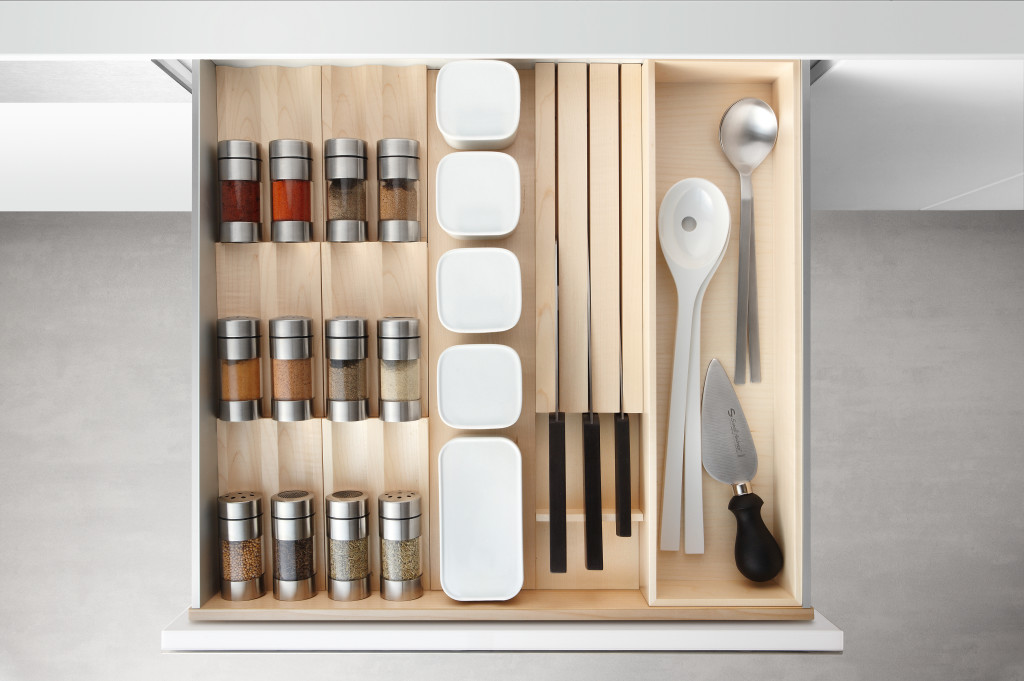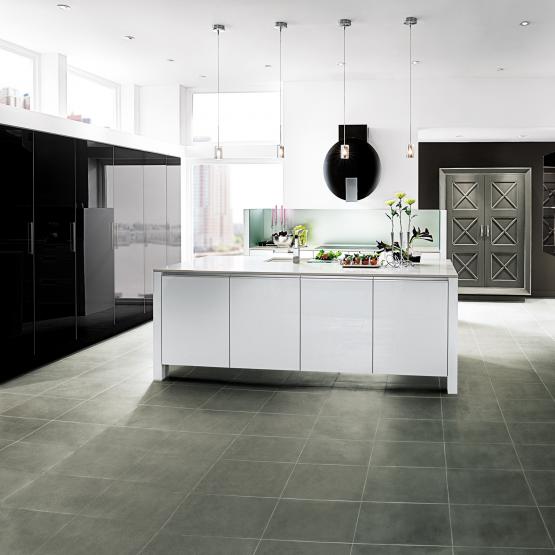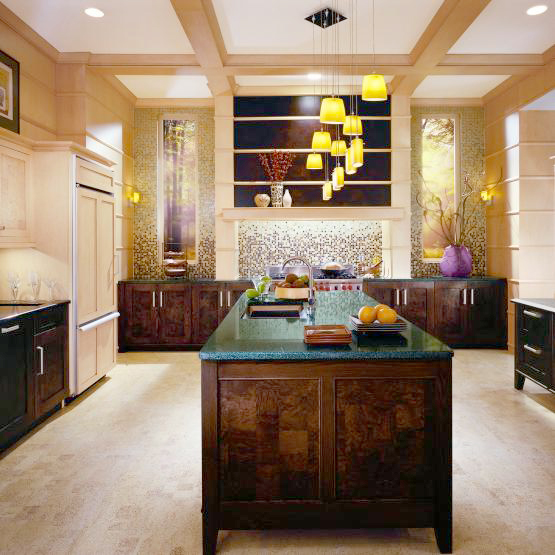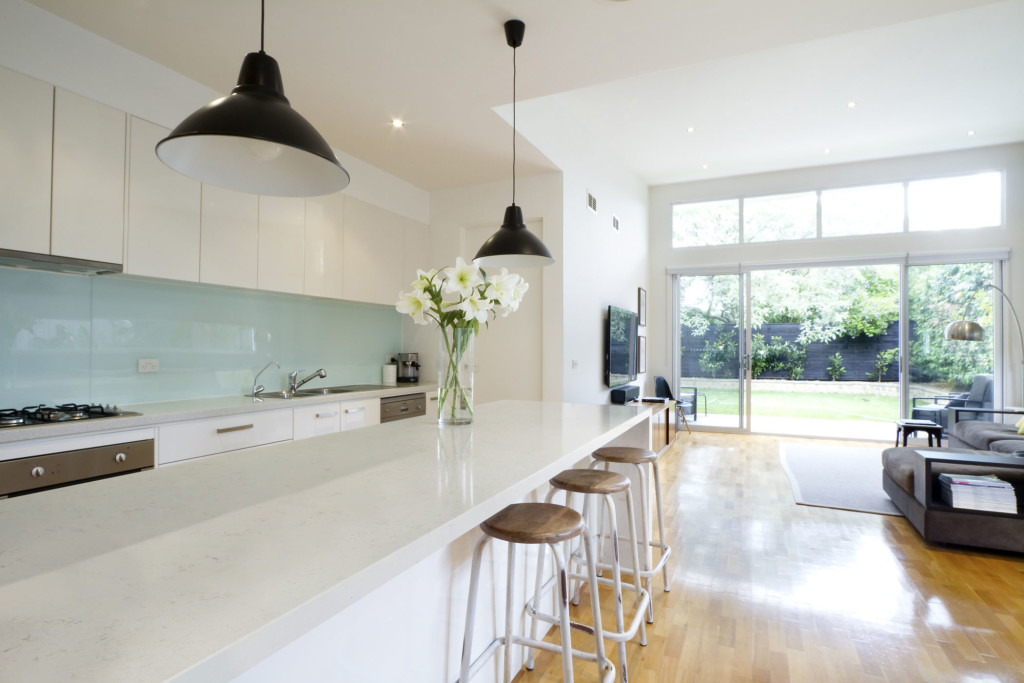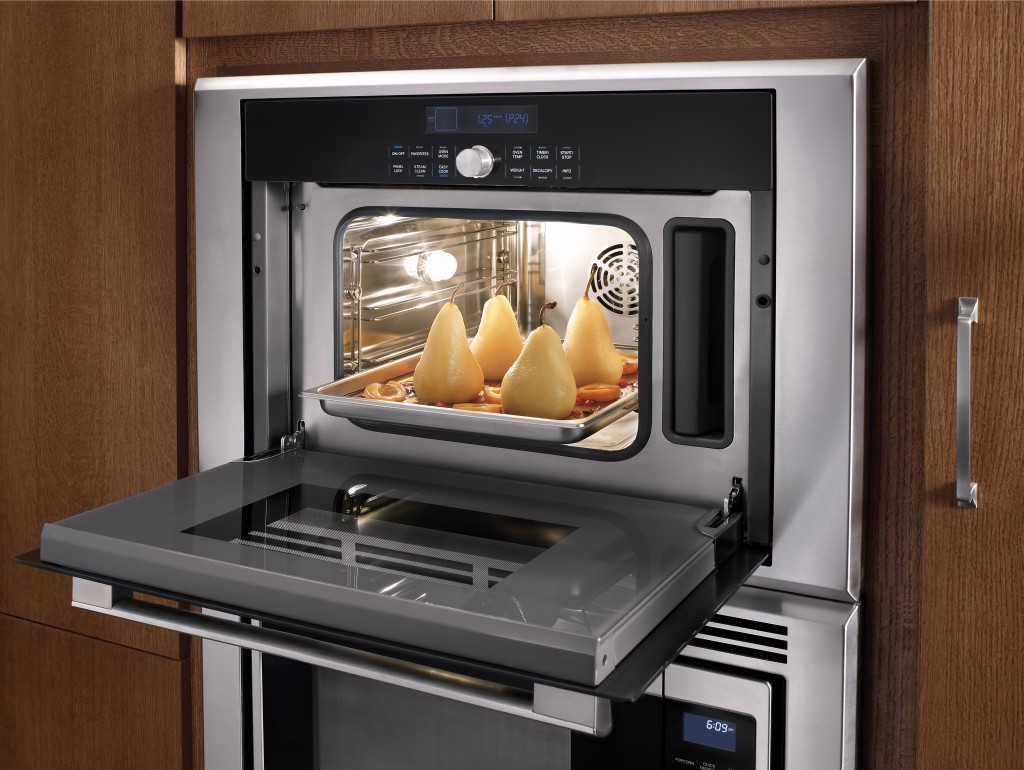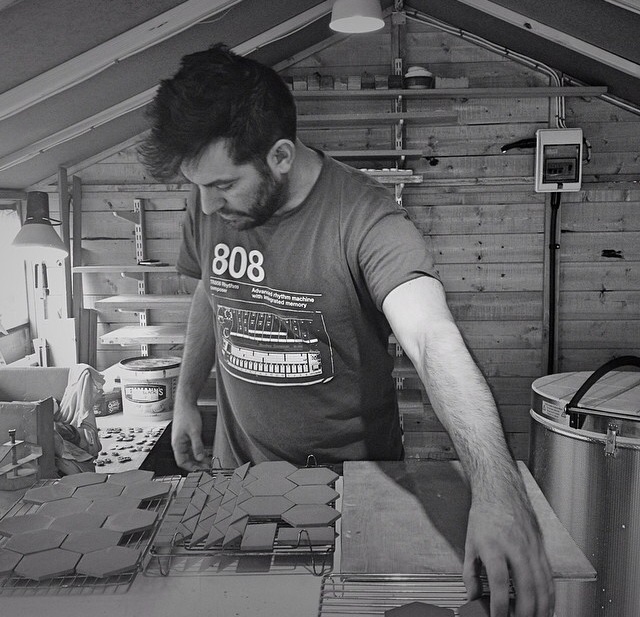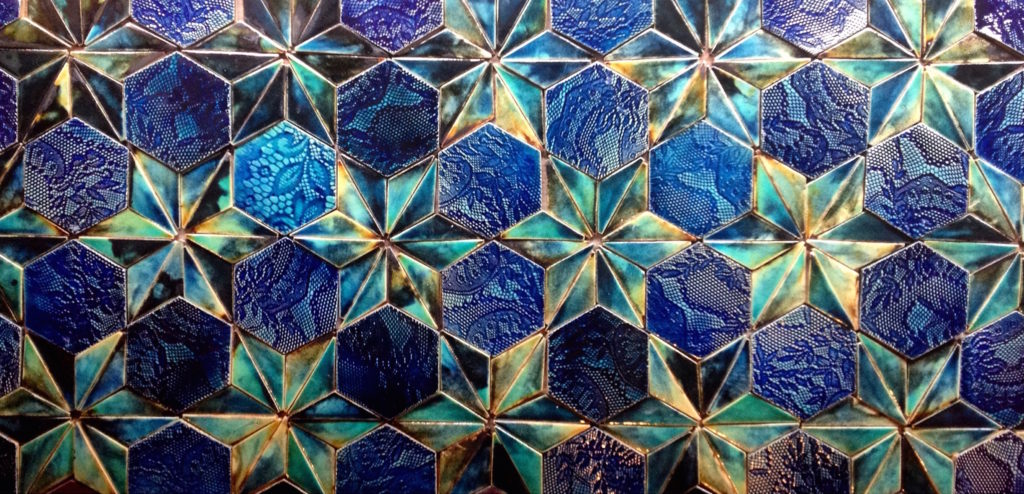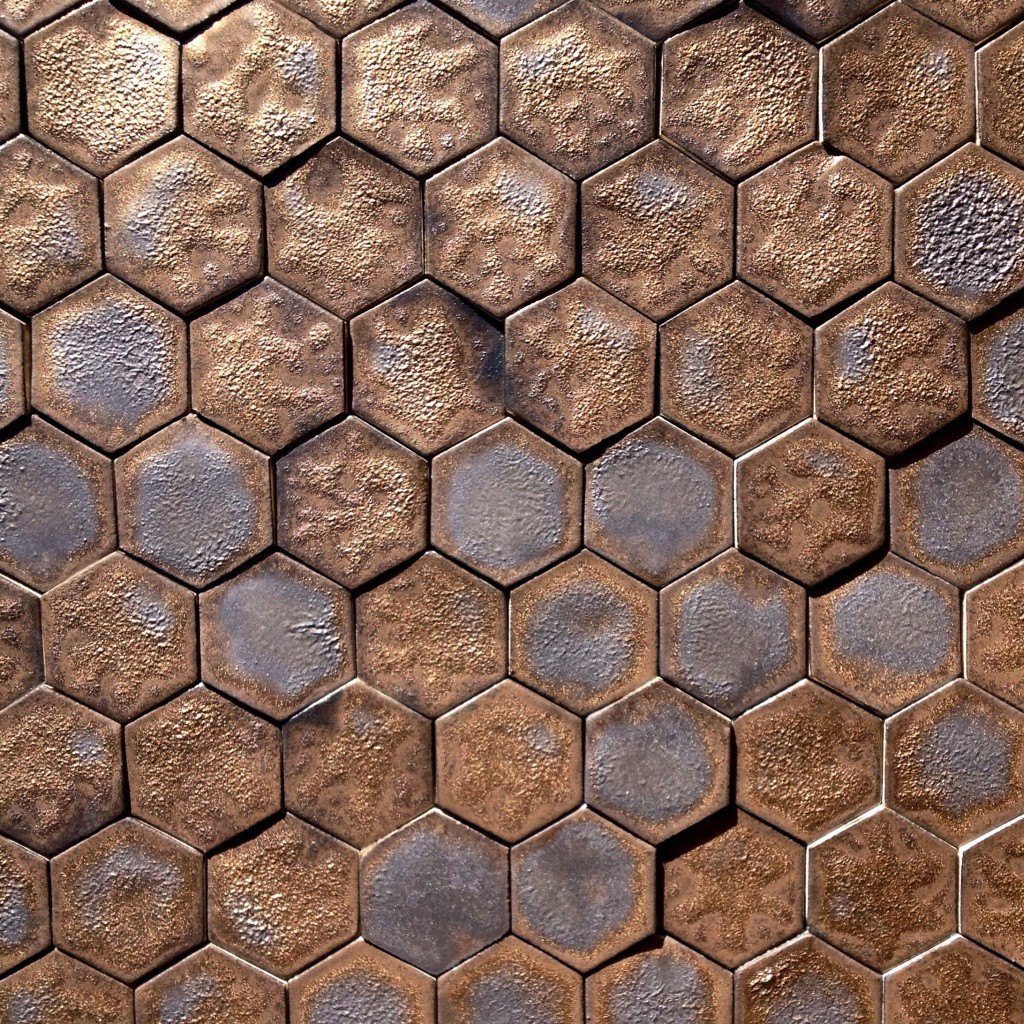Who says the art of printing is dead? You may be devouring novels on your Kindle but printing is very much alive at Custom Cupboards. Their Facets program allows you to bring a new level of personalization to your kitchen, bath or anywhere you have cabinets through digital printing. 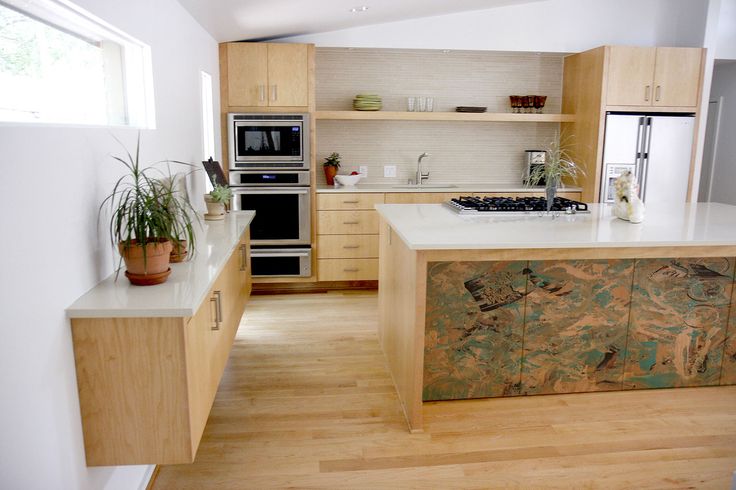 With Facets you can have a truly artful kitchen enhanced with your own original artwork or photography. If you can dream it they can do it. Just remember you can't reproduce work that is copyrighted. That is a no no, but you knew that, yes?
With Facets you can have a truly artful kitchen enhanced with your own original artwork or photography. If you can dream it they can do it. Just remember you can't reproduce work that is copyrighted. That is a no no, but you knew that, yes? Mael Hernandez, President of this Wichita Kansas based company, was quoted in the Wichita Business Journal as saying,“It’s all about the trend in personalization. We think this is going to change the cabinet industry. It’s very exciting for us.”
Mael Hernandez, President of this Wichita Kansas based company, was quoted in the Wichita Business Journal as saying,“It’s all about the trend in personalization. We think this is going to change the cabinet industry. It’s very exciting for us.”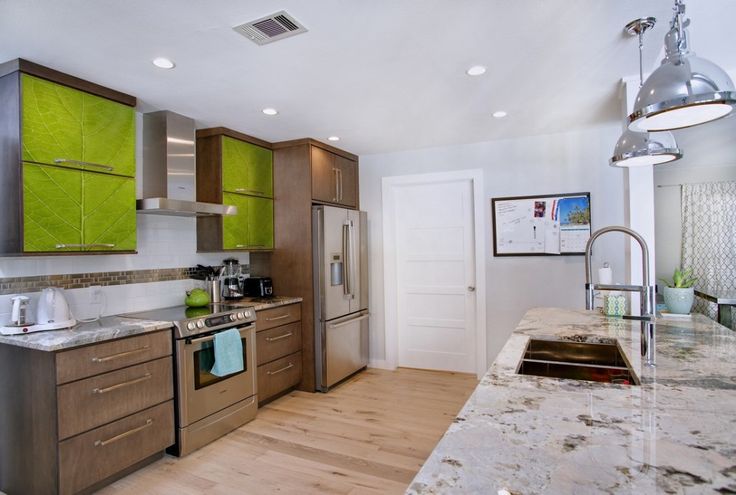 Custom Cupboards uses patent pending digital printing technology to stylize cabinet fronts with textures, patterns, art, photography and even typography.
Custom Cupboards uses patent pending digital printing technology to stylize cabinet fronts with textures, patterns, art, photography and even typography.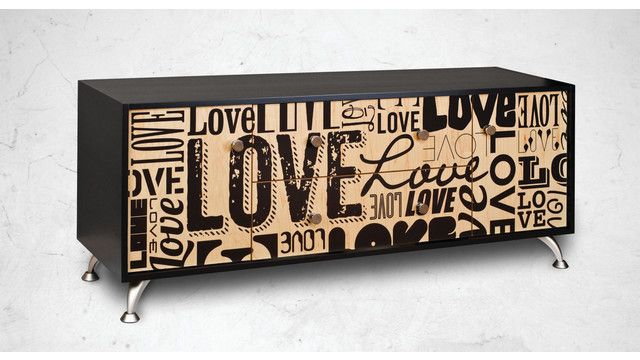 What do you think? Remember it's just an accent, doesn't have to be on every cabinet. In fact, less is definitely more in this case. You're creating a focal point which gets diluted when over done. In case you're wondering, Facets would add about 15% to the cost of an average 13 cabinet, L-shaped kitchen if you did it on say three doors. If you'd like to explore adding a new "facet" to your kitchen, I'd love to help you do it!
What do you think? Remember it's just an accent, doesn't have to be on every cabinet. In fact, less is definitely more in this case. You're creating a focal point which gets diluted when over done. In case you're wondering, Facets would add about 15% to the cost of an average 13 cabinet, L-shaped kitchen if you did it on say three doors. If you'd like to explore adding a new "facet" to your kitchen, I'd love to help you do it!
Open Shelves Add Function and Style
Open shelves, especially floating shelves happen to be all the rage at the moment, should you or shouldn’t you? I often hear concerns about neatness. Do we really want to see it all? Maybe we do. Open shelves can greatly increase efficiency in the kitchen. Having our most used dishes, utensils and ingredients displayed and at our finger tips is very tempting! This is how the chefs do it and there is even a term for it in French.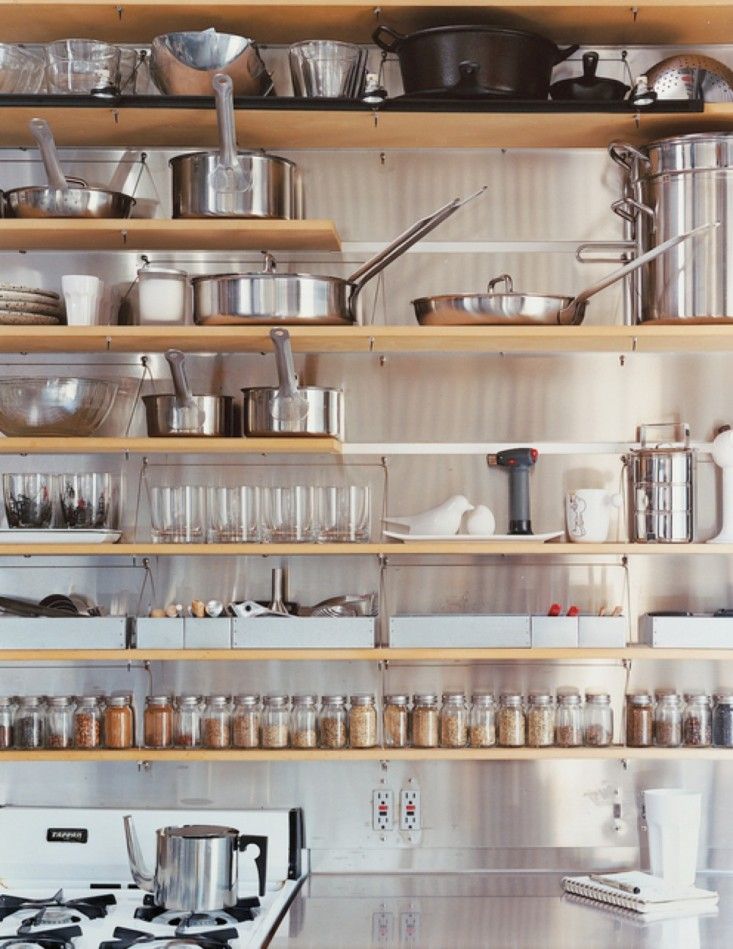 Mise en place is a French culinary phrase which means "putting in place", as in set up. It is used in professional kitchens to refer to organizing and arranging the ingredients and items that a cook will require for preparing the menu items of the day. We can also apply this concept in our own kitchens. Here's an interesting story I came across on NPR about Mise en place. Listen and you will discover the perfect French pronunciation!
Mise en place is a French culinary phrase which means "putting in place", as in set up. It is used in professional kitchens to refer to organizing and arranging the ingredients and items that a cook will require for preparing the menu items of the day. We can also apply this concept in our own kitchens. Here's an interesting story I came across on NPR about Mise en place. Listen and you will discover the perfect French pronunciation!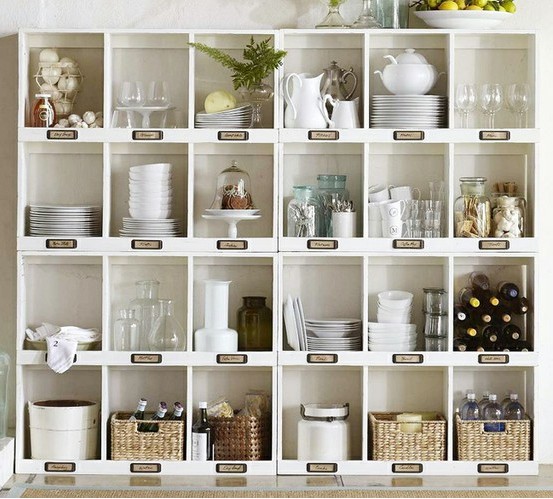 Usually storage space in the kitchen is too dear to squander on an area strictly for show so I urge you to incorporate an open shelf or open cabinet only if it will be useful as well as visually interesting. When you get right down to it, kitchens are comprised of boxes and row after row of doors can get pretty boring. I like to add some variety with open shelves and glass doors.
Usually storage space in the kitchen is too dear to squander on an area strictly for show so I urge you to incorporate an open shelf or open cabinet only if it will be useful as well as visually interesting. When you get right down to it, kitchens are comprised of boxes and row after row of doors can get pretty boring. I like to add some variety with open shelves and glass doors.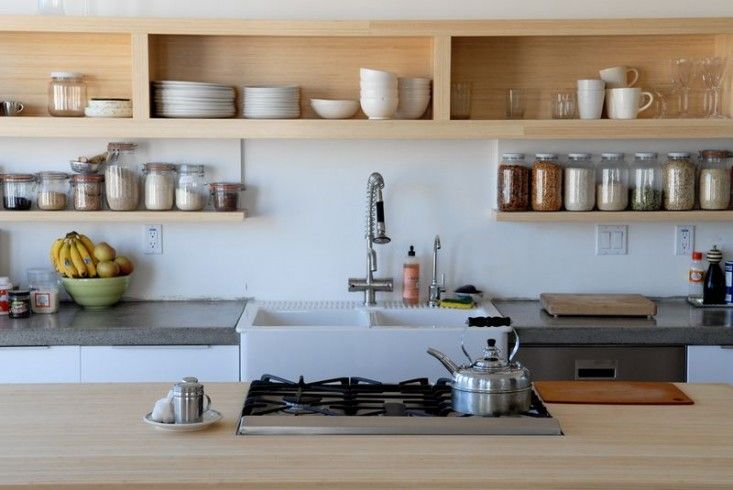 That said, if you do have a collection that you love to gaze upon and showcase , open shelves are perfect is hard to reach areas such as high up or on the far side of a peninsula
That said, if you do have a collection that you love to gaze upon and showcase , open shelves are perfect is hard to reach areas such as high up or on the far side of a peninsula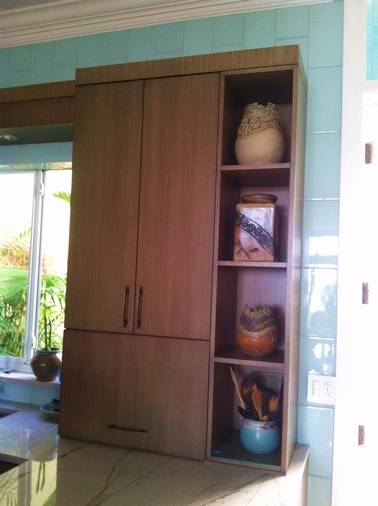 This client is a talented potter. What better way to show off her work? Easy to get to for dusting when you’re on the other side of the peninsula but this area is not really accessible when you’re on the working side of the kitchen.
This client is a talented potter. What better way to show off her work? Easy to get to for dusting when you’re on the other side of the peninsula but this area is not really accessible when you’re on the working side of the kitchen.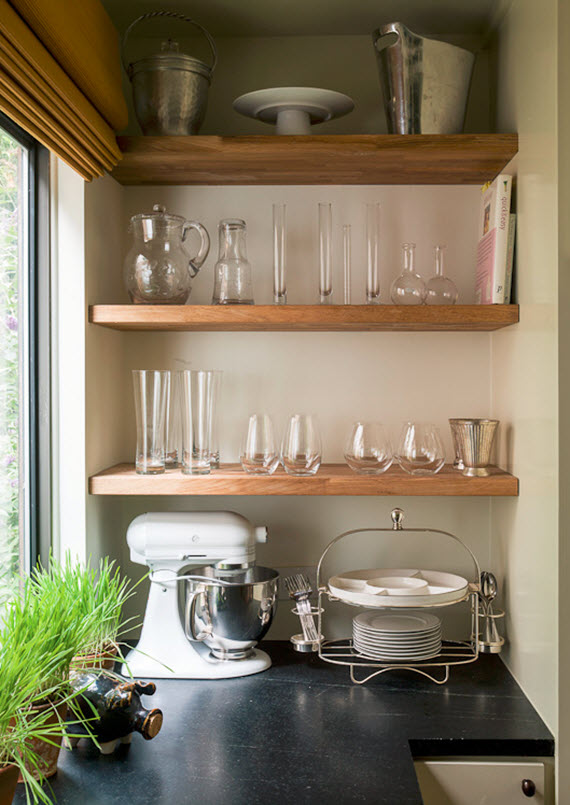 http://www.shelterness.com/pictures/open-shelves-on-a-kitchen-30.jpeg
http://www.shelterness.com/pictures/open-shelves-on-a-kitchen-30.jpeg
Eva Hesse: The Artist and The Kitchen
THE ARTISTThe biggest trend in design today is "personalization", the late painter and sculptor Eva Hesse spoke of personalization before many of us were even born! She was speaking in terms of her art when she said,"It just seems to me that "personal" in art, if really pushed, is the most valued quality & what I want so much to find in & for myself." Eva Hesse, succumbed to a brain tumor in 1970 at the age of 34. Although she only produced art for 10 years, from 1960 to 1970, she is known for her pioneering work in latex, fiberglass and plastic. She was part of an art movement in the 1960s known as postminimalism. Hesse was among the first artists of the 1960s to experiment with the fluidity of the organic shapes of nature. She used modern materials to portray organic forms including grid patterns and repetition. These themes were often found in minimalism, but Hesse typically made her works by hand while her contemporaries were using machines. This practice introduced a human element into her art.
Eva Hesse, succumbed to a brain tumor in 1970 at the age of 34. Although she only produced art for 10 years, from 1960 to 1970, she is known for her pioneering work in latex, fiberglass and plastic. She was part of an art movement in the 1960s known as postminimalism. Hesse was among the first artists of the 1960s to experiment with the fluidity of the organic shapes of nature. She used modern materials to portray organic forms including grid patterns and repetition. These themes were often found in minimalism, but Hesse typically made her works by hand while her contemporaries were using machines. This practice introduced a human element into her art.
 A new documentary about her life was released earlier this year and premiered at The Whitney Museum in New York City back in May. I can't wait to see it! Below is a clip."Eva Hesse" feature doc Intro from Tracing the Rope on Vimeo.THE KITCHENI wonder what Eva's kitchen would look like. I could find no photo to give me clues but when I think of Eva I think of organic elements, natural finishes, bold shapes and even a touch of the absurd, which she loved! Here are some kitchens evocative of Eva.
A new documentary about her life was released earlier this year and premiered at The Whitney Museum in New York City back in May. I can't wait to see it! Below is a clip."Eva Hesse" feature doc Intro from Tracing the Rope on Vimeo.THE KITCHENI wonder what Eva's kitchen would look like. I could find no photo to give me clues but when I think of Eva I think of organic elements, natural finishes, bold shapes and even a touch of the absurd, which she loved! Here are some kitchens evocative of Eva.

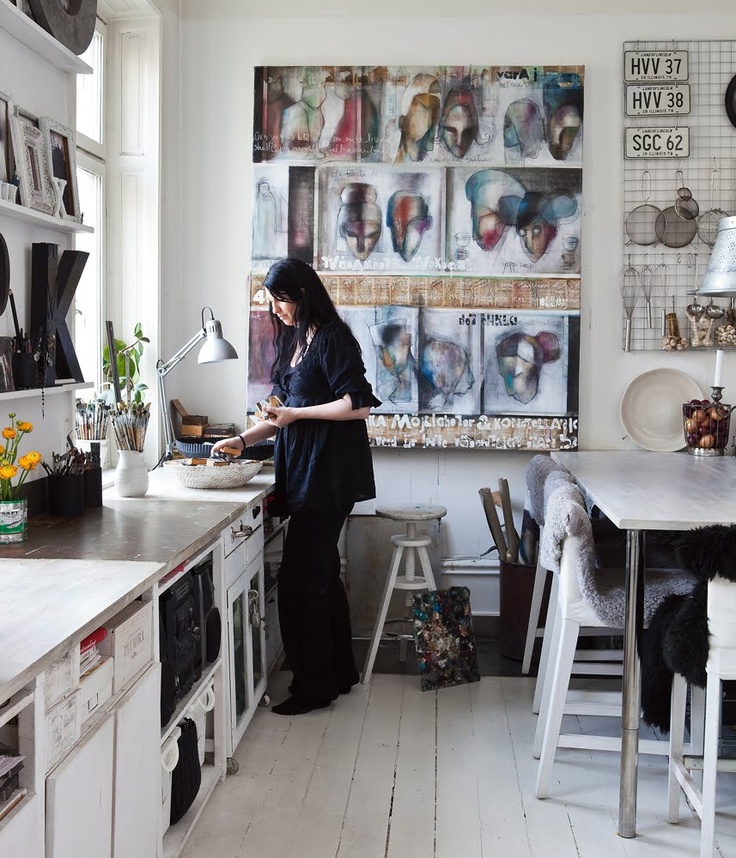 On my morning walks, whenever I pass this spot I always look up and think of Eva.
On my morning walks, whenever I pass this spot I always look up and think of Eva.
5 Elements of an Artful Kitchen
Summer projects are underway in South Florida! In fact, it's the height of the busy season for most design professionals here.
I don't have to tell you that a new kitchen is a big investment, in fact the kitchen is the most expensive renovation you're ever likely to undertake. It stands to reason that you'd want a kitchen that is tailor-made for you whether you can afford custom or not. This is what we're all about at Artful Kitchens.
The concept of an "artful kitchen" has many different facets. It is not just about budget or the amount of space you have but the skill you employ using what is available to you. Here are five tips to consider along with some visual inspiration featuring products I saw this year at the Kitchen & Bath Industry (KBIS) trade show in Las Vegas. Implement these with style and confidence and you will be the proud owner of an artful kitchen!
1. Flawless Function
I'm all about artistic expression but a major part of creativity in the kitchen comes from devising flawless function. This quality is not something you see but something you can experience if artfully accomplished. When I say function, I mean work centers comprised of cooking, clean up and food prep areas.
Those are the basics but you could have more such as a beverage center (think coffee, tea, wine), a computer station or a baking center. If you have a two-cook kitchen, your layout should be designed so that any one of the major functions can be performed without anyone getting underfoot.
Following the guidelines set by the NKBA is a must to make sure all clearances are adequate. Sometimes we don't have a lot of choice about where to locate our sink or appliances but we can organize our utensils, dishes, pots and food items in a more efficient way. Don't forget the more flawlessly your kitchen functions the safer it is. You don't have to be an expert at this, just think about how you use your kitchen so that you will be a good collaborator when it comes time to work with a professional.
2. Personalization
This is, without a doubt, the biggest movement in the design world. An artful kitchen is your own personal statement customized to the way you live. It could be a steam oven because healthy eating is your passion or it could be a lovely furniture piece with glass doors to display your grandmother's china. Include the colors you love. Even though you must be mindful of your budget (everyone has one), strive to retain the essence of what you see as your dream kitchen.
3. Harmony
Harmony is one of the principles of design and a must for your kitchen. Whenever I design a two-toned kitchen I like to ensure that different finishes and details are carried through the space to create a cohesive whole. It's about how the floor relates to the cabinets and how the cabinet hardware relates to the faucet. You get the picture! It does not mean that everything has to match perfectly, it means elements should relate to and complement each other. It also does not mean that every element has to be perfectly symmetrical. In fact, consider this permission NOT to be! I find that the best rule of thumb is to follow the architecture and style of the home you're in. If, for example, the kitchen window is way off center you should work with that not against it. Never force solutions by sacrificing function.
4. Focal Point
Every piece of great artwork has a focal point. It is the "star of the show", so to speak. In a kitchen it can be a sculptural range hood, a granite counter with big bold movement or actually a piece of art! It is the item that makes you say WOW when you enter the kitchen. Just remember less is more here. One great focal point is probably enough. Too much and the statement gets lost. Less is definitely more.
5. Texture
The element of texture involves at least two of our senses, touch and sight. The textures you are likely to come across include the glossy finishes popular in contemporary design, prominent wood grains which can be traditional or modern and smooth honed surfaces that are more matte. A flat slab cabinet door is a great choice if you plan to use a wood with a lot of pattern and graining. In this case the material is the decorative element of the cabinet. On the other hand, if you are traditional and you are using white cabinets you can select a door with some molding or detail. Also let the wild patterns either be on your cabinets or on your counter, both would be busy and distracting.
This is only the tip of the iceberg, so to speak. There are many more tricks and methods to create an artful kitchen. What are yours? Please keep in touch and contact me. Whether you need a quick consult or a full design layout I can help in person or virtually.
I'm located in the West Palm Beach area, so if you're local I can also help you shop for your kitchen products.
Kitchen Work Centers, the New "Triangle"
Whether you are a design professional or an educated homeowner you’ve probably heard the term “kitchen work triangle”. In fact it’s probably one of the first things you learn when endeavoring to create a new kitchen. Who thought this up? It is actually the result of a study made at the University of Illinois in the 1950s! If you’re wondering if it could be outdated, just think of how much kitchens have changed since then in terms of products, appliances and how we use them.The National Kitchen and Bath Association (NKBA) defines the kitchen “work triangle” an imaginary straight line drawn from the center of the sink, to the center of the cook top, to the center of the refrigerator and finally back to the sink.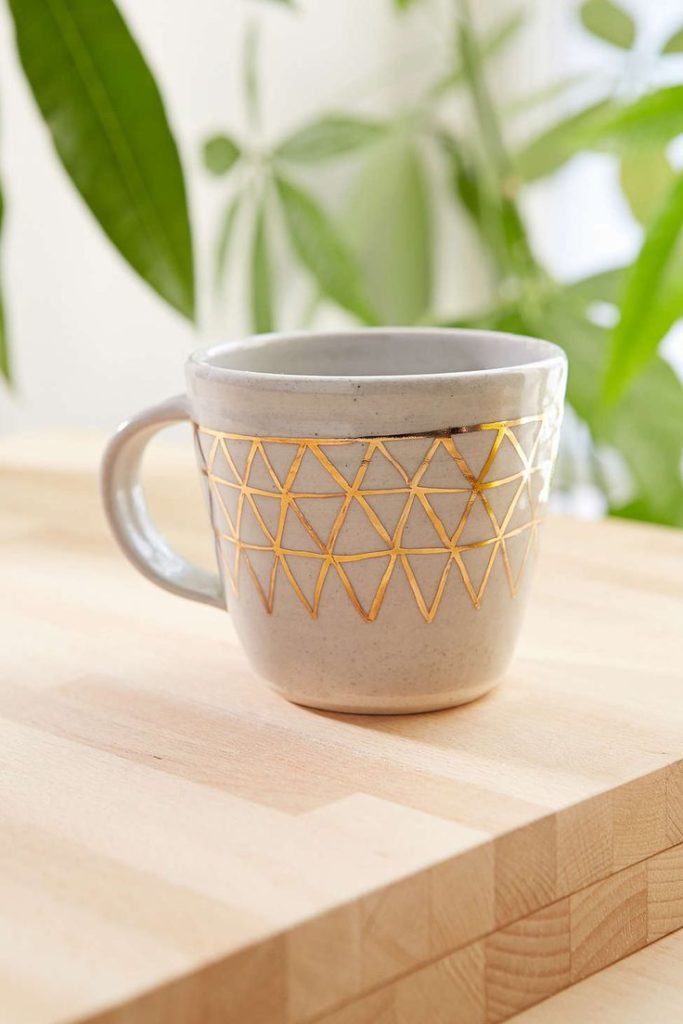 The NKBA suggests the following guidelines for determining a work triangle:- The sum of the work triangle's three sides should not exceed 26 ft. and each leg should measure between 4 ft. and 9 ft.
The NKBA suggests the following guidelines for determining a work triangle:- The sum of the work triangle's three sides should not exceed 26 ft. and each leg should measure between 4 ft. and 9 ft.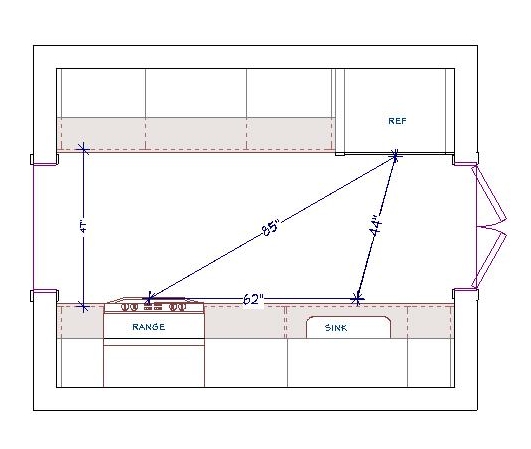 - The work triangle should not cut through an island or peninsula by more than 12 inches.- If the kitchen has only one sink, it should be placed between or across from the cooking surface, preparation area or refrigerator.Yes, this makes kitchen design sound a bit like solving a puzzle and, actually, it really is. I know my design is “right” when the layout works from every angle in terms of safety, ease of function and, of course, aesthetics.
- The work triangle should not cut through an island or peninsula by more than 12 inches.- If the kitchen has only one sink, it should be placed between or across from the cooking surface, preparation area or refrigerator.Yes, this makes kitchen design sound a bit like solving a puzzle and, actually, it really is. I know my design is “right” when the layout works from every angle in terms of safety, ease of function and, of course, aesthetics.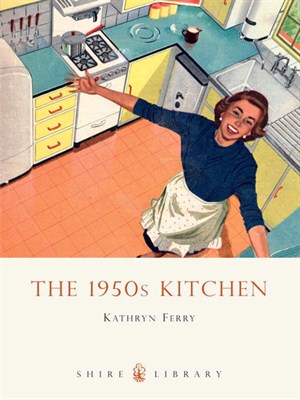 Some of the design solution is just good sound common sense but much of it should be directed by the individual needs of the client. I don’t “do” the triangle as a rule. Today we have multiple cook kitchens and no end of possible appliances. Modern kitchens are so unlike those of 60 years ago, so I use the more updated concept of “work centers”. The basic ones are food prep, cooking, clean up and storage.
Some of the design solution is just good sound common sense but much of it should be directed by the individual needs of the client. I don’t “do” the triangle as a rule. Today we have multiple cook kitchens and no end of possible appliances. Modern kitchens are so unlike those of 60 years ago, so I use the more updated concept of “work centers”. The basic ones are food prep, cooking, clean up and storage. 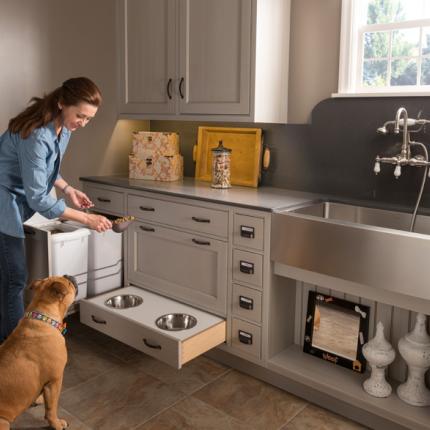 So while efficiency is still at the forefront, the thinking is a bit more evolved to address twenty first century needs.In a perfect world, work centers should be situated to allow someone to work in one area without getting in the way of someone using another. However, let’s face it, in a very small kitchen that is just not going to happen! The focus then is twofold: enough storage and enough counter space.
So while efficiency is still at the forefront, the thinking is a bit more evolved to address twenty first century needs.In a perfect world, work centers should be situated to allow someone to work in one area without getting in the way of someone using another. However, let’s face it, in a very small kitchen that is just not going to happen! The focus then is twofold: enough storage and enough counter space.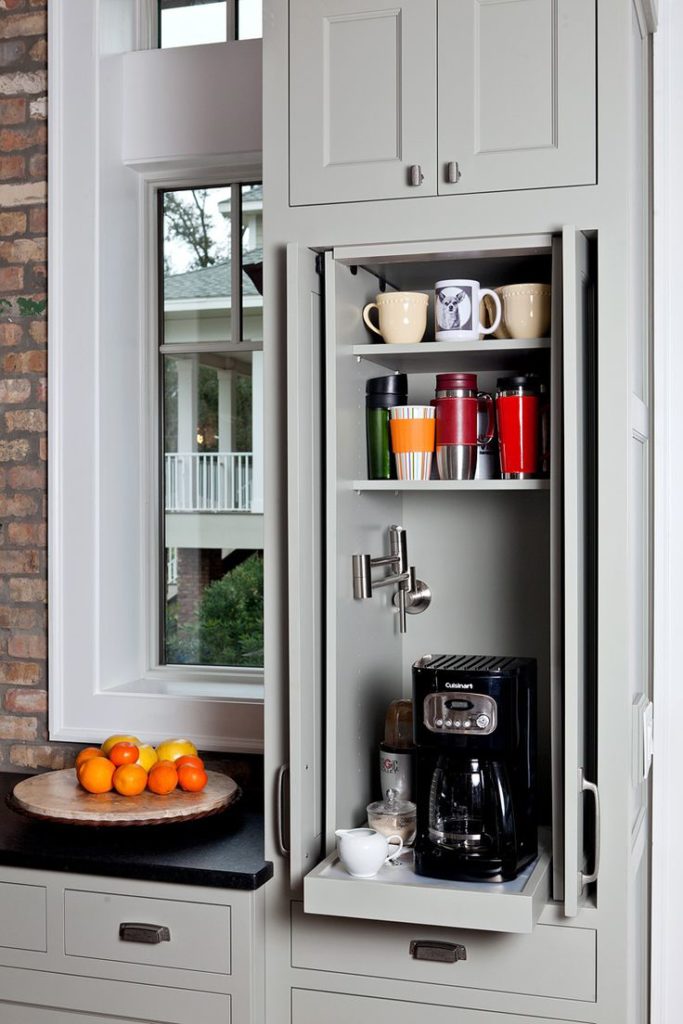 The types of work centers you can have is only limited by your imagination. Here are some good ones:-Beverage center- It can be coffee/tea, smoothies, wine or cocktails-Media center-It can be sit down area for menu planning, computer, charging station or TV-Baking center- You can trick this area out with customized storage for bake ware, bowls, utensils and a marble top for rolling dough.
The types of work centers you can have is only limited by your imagination. Here are some good ones:-Beverage center- It can be coffee/tea, smoothies, wine or cocktails-Media center-It can be sit down area for menu planning, computer, charging station or TV-Baking center- You can trick this area out with customized storage for bake ware, bowls, utensils and a marble top for rolling dough.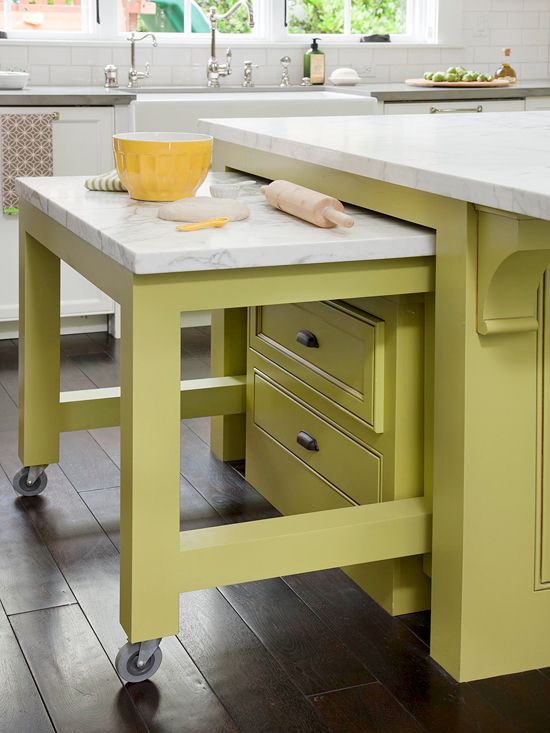 Remember that an “artful kitchen” employs what I call “practical creativity”. Function is the infrastructure, beauty comes next, the art is getting both just right.
Remember that an “artful kitchen” employs what I call “practical creativity”. Function is the infrastructure, beauty comes next, the art is getting both just right.
A Tile Tale Inspired by Life and Process: Meet Guy Mitchell

